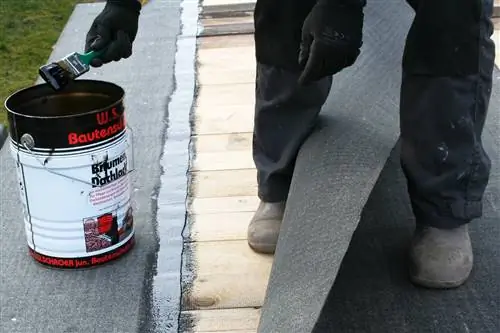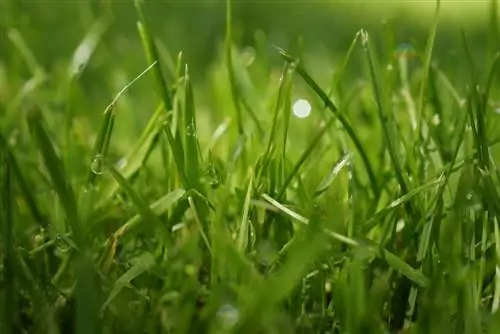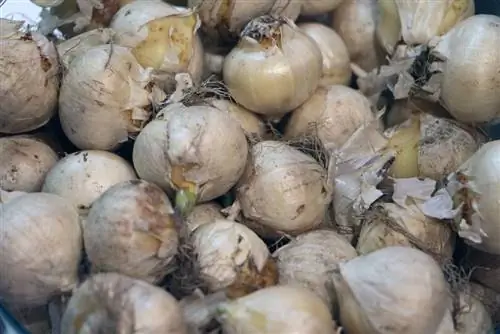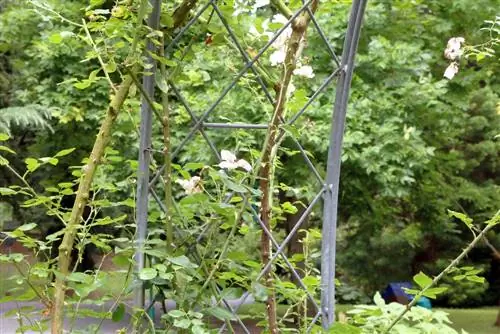- Author admin [email protected].
- Public 2023-12-17 03:39.
- Last modified 2025-01-24 12:45.
Have you discovered black, sticky stains on your clothing, hands or car? This is probably bitumen or tar. Don't despair! A simple home remedy offers its dissolving power.
Bitumen and tar
Black, sticky spots can be either tar or bitumen. Tar is now classified as harmful to he alth and no longer has its own properties. But we can still encounter it in everyday life. As a covering on old roads or as an adhesive, waterproofing or in roofing felt in older houses, even indoors. Bitumen is a tar-like mass that is obtained naturally or from petroleum. It is currently still in use. Visually, the two materials can hardly be distinguished. This is not crucial for stain removal either, because the procedure is the same.
Tip:
If you suspect that there is tar in your four walls, you should definitely investigate. The vapors that it releases to a large extent, especially when exposed to heat, are considered carcinogenic.
Bitumen stains on skin
Prevention is the best solution. Long-sleeved clothing and the use of gloves when practical will provide protection from stains. If sharpeners still get on the skin, they must be removed as quickly as possible. Because as long as the stains are still fresh, they can be easily washed off with water. Stains that have already dried are difficult to remove. But you can get rid of these too with the following fats:
- Butter
- Margarine
- Cooking oil
The contaminated skin areas are rubbed thoroughly with one of these fats and then rinsed with plenty of water. Stubborn residue can be removed by using a brush and soap.
Tip:
Do not attempt to remove bitumen stains with common solvents such as acetone. They hardly have any cleaning effect against the black, sticky mass, but they irritate the skin.
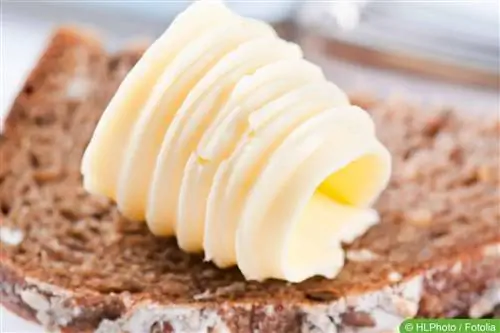
Bitumen stains on clothing
Wearing old clothes is highly recommended when working with materials containing bituminous materials. Because bitumen splashes can hardly be avoided. In addition, there is no guarantee that they can be completely removed. You also have the best prospects of pore-deep cleanliness with oil. The instructions in detail:
- Rub the stained area with oil as early as possible, because the older the stain, the harder it is to remove.
- Let the oil work for a while.
- Then rinse the area with water.
- Then wash the laundry items normally in the washing machine.
There are some secret remedies shared on the internet that are also supposed to be good at removing these types of stains. But before you use benzine, turpentine oil, etc., make sure that the fabric of your garment can survive contact with them undamaged.
Tip:
The additional use of gall soap can help remove stain residues from the fabric even better. However, this tried and tested stain remover is not recommended for all types of fabric. Please note the information on the packaging of the gall soap.
Bitumen stains on car paint
Black spots on cars are rare. If so, they usually occur in summer. This is when road surfaces can become very hot. The components tar or bitumen lose their solid, stable form. Under the pressure of tires, small, soft pieces can detach from the road surface and initially stick to tires. As the wheels rotate, they later reach other parts of the vehicle, where they stay thanks to their adhesive power and dry out when the temperatures cool down. All car stains are removed with butter, margarine or cooking oil.
- first rub grease onto the stain
- Let it soak in for ten minutes
- then clean the area thoroughly with water and detergent
- only use a soft cloth for sensitive paintwork
- if there are stubborn residues, polish the paint with paint polish
Tip:
Use only pure fats. With fatty products, such as creams, there is a risk that the paint will be attacked by the other ingredients.

Bitumen pieces on car wheels
Bitumen pieces on tires are usually not noticeable because they do not contrast in color and are also hidden in grooves. But the next heat is guaranteed to melt them. If the wheels move while driving, new stains on the paint are inevitable. If you have discovered stains on the paint, you should also check the tires straight away. Since they are made of robust material, you can also use a sturdy brush here. Passionate motorcyclists should also check their motorcycle clothing for stains in summer.
Remove stains on concrete yourself
Where bitumen is used for construction and craft work, concrete is usually not far away. It should be avoided as much as possible that concrete surfaces get bitumen splashes. Because removing these stains on your own is time-consuming. Depending on the location and number of stains, several methods are available:
- Chemical removal: The chemical agent is applied to the stains. After the specified exposure time, the bitumen can be removed from the substrate with a spatula. Ideal for smaller areas.
- Mechanical/manual removal: The bitumen pieces are removed from the surface using a hammer, chisel and a lot of muscle power.
- Removal with heat: The bitumen layer is first heated with a gas burner. The softened material is then removed with a spatula.
Tip:
If the contaminated area is made of natural stone, you should purchase a special cleaning agent for natural stone from the store. Other remedies may be too aggressive.
Have concrete professionally cleaned
It is possible to commission a specialist company to remove stains. This professional stain removal is easy on the wallet. On the other hand, it saves your own time and effort and guarantees a professional approach. Two different methods are used:
Dry ice blasting
- Dry ice (in pellet form) is “shot” onto the stains with high pressure
- this causes the temperature of the bitumen to suddenly drop significantly
- the material immediately splinters and can be collected
- The concrete is protected because its dimensional stability is not changed
Fine blasting
The blasting material used has cutting edges. When it hits the bitumen material, it is ground away in layers. The procedure is carried out until every last residue has been sanded off.
Tip:
Save yourself the laborious or expensive stain removal by completely covering all nearby concrete areas before starting work.

